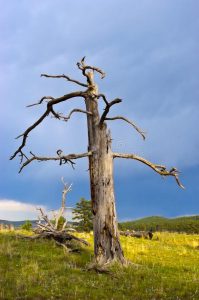Litigation Weekly June 1
The court upheld the Lava Hazardous Fuel Reduction Project on the Modoc National Forest involving northern spotted owls and gray wolves. (E.D. Cal.) (See additional discussion below.)
(New case.) This case involves the Hyde Park Wildland Urban Interface Thinning and Prescribed Fire Project on the Santa Fe National Forest, which applied a Healthy Forest Restoration Act categorical exclusion to 1,840 acres, most of which is allegedly found in inventoried roadless areas. (D. N.M.) (See also this article – with a lot of comments.)
(New case.) At issue is a 2017 legal opinion issued by the Department of Interior that reversed its longstanding interpretation of the Migratory Bird Treaty Act so that it no longer applies to incidental killing of migratory birds by activities like oil spills and wind farms. (S.D. N.Y.)
Blogger’s notes on Conservation Congress:
Although the Fish and Wildlife Service had found that the wolf “may be present” in the relevant counties, the nearest pack was 20-30 miles away, and the only other wolves that had been in California were last located in Oregon, with no reason to think they would be drawn to the project area over other areas (since wolves are a habitat generalist). What was interesting to me about the wolf issue was that once the court agreed that there was “no effect” on wolves, that also meant that plaintiffs could not be harmed, and therefore, “Plaintiff has failed to establish standing here because even assuming Plaintiff can establish that its members have an interest in the gray wolf, any injury to that interest is conjectural.”
For spotted owls, the court found: “The FWS appropriately analyzed critical habitat and observed that: (1) no nesting/roosting or foraging habitat would be directly affected by the Project; (2) while foraging and dispersal habitat would be indirectly affected, those effects would be insignificant; and (3) dispersal habitat would be directly affected by the removal of six acres and the degradation of 33 acres of habitat, but that too, in the larger context of the subunit, was also insignificant.”
The court used the word “insignificant” here, but the FWS actually said Project activities within the NSO activity centers would have “[s]ignificant negative effects to northern spotted owls potentially occupying” those activity centers by altering their ability “to breed, feed, and shelter within the action area” (emphasis added). The Court added that, “The BiOp, however, recognized the forest-health benefits of the Project and concluded that “[a]lthough there will be short and long term negative effects to northern spotted owl habitat, the proposed action will help sustain northern spotted owl habitat over the long term.”
The definition of “effects” in the CEQ NEPA regulations requires that the beneficial and detrimental effects be considered separately, “even if on balance the agency believes the effect will be beneficial.” However, the court held that there were no significant impacts that would have triggered an EIS. In doing so it also said there was no scientific controversy, even though there was, according to the Forest Service (and as suggested above), “a difference of professional opinion on the amount of effect” between it and the FWS.




